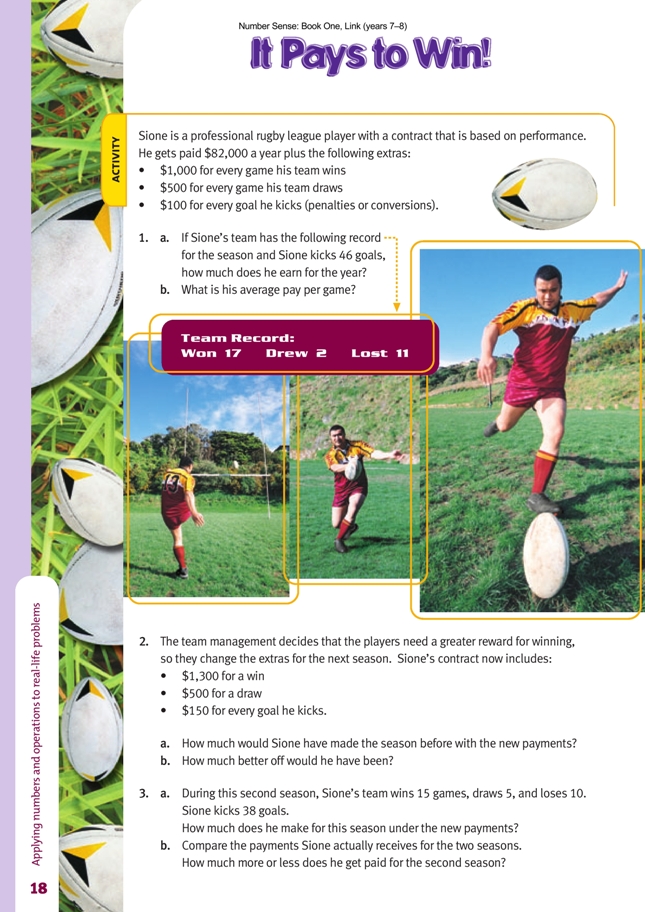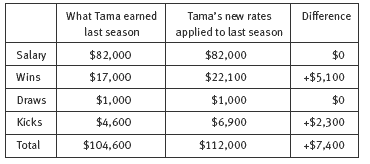This is a level 3 number activity from the Figure It Out series. It relates to Stage 6 of the Number Framework.
A PDF of the student activity is included.
Click on the image to enlarge it. Click again to close. Download PDF (654 KB)
choose a mental strategy to solve problems
multiply by multiples of 100 and by 1000
This activity provides an interesting context for solving computational problems that involve 5- and 6-digit whole numbers.
The numbers involved have been deliberately chosen so that the students can use a range of strategies. Encourage them to try to work out each payment mentally and then check by writing out their methods or doing it on the calculator. If the calculator is used as the first strategy, it will help some students achieve success but the opportunity to solve the problems using the properties of the numbers involved will be lost. You should give guidance to individual students about which questions they should solve with a calculator, for example, question 2b.
The students may attempt to solve the problems by counting forwards in hundreds or thousands, by adding, or by multiplying. Whatever strategies the students use should be valued positively. At the same time, the students should be encouraged to improve the speed and efficiency of their methods.
Before the students attempt the calculations involved in each question, make sure they show that they understand what is going on in the problem and how each performance payment works as an add-on to the basic salary. Encourage the students to record their thinking by carefully setting out their work and including
their method of calculation for each step:
.gif)
In question 2a, the students could use a recording method that helps them compare the new payments with the old.
Some students may choose to calculate the difference after working out the total income for each rate. Alternatively, they could set up a running total of the differences calculated at the end of each stage.
If calculators are used, the latter method will provide a great opportunity to show the students how to use the memory keys to record the running total. For example, after the $17,000 has been subtracted from the $22,100, enter the result of + $5,100 into the memory by pressing the M+ key. Use the same process to store the + $2,300 in the memory. The running total will come up when the MR key is used to recall the amount.
Answers to Activity
1. a. $104,600
b. $3,486.67
2. a. $112,000
b. $7,400
3. a. $109,700
b. $5,100 better off

